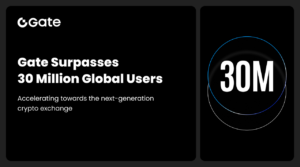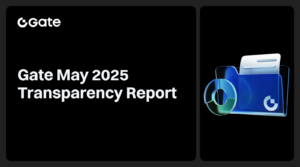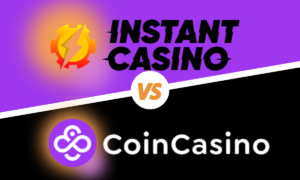
Cross-Chain Bridges for Decentralized Identity (DID)
Decentralized Identity (DID) systems have gained significant traction in recent years, offering individuals greater control over their personal information and enhancing privacy and security in the digital realm. However, the challenge of interoperability remains a significant hurdle for the widespread adoption of DID systems. Cross-chain bridges provide a promising solution to this problem by enabling the seamless transfer of decentralized identities across different blockchain networks. In this article, we will explore the concept of cross-chain bridges for decentralized identity systems and delve into their role in promoting interoperability.
Introduction to Decentralized Identity Systems
Decentralized Identity (DID) systems aim to empower individuals with full control over their digital identities while ensuring privacy and security. Unlike traditional identity systems that rely on centralized authorities, DID systems leverage blockchain technology to create self-sovereign identities. These identities are portable, verifiable, and secure, allowing individuals to manage their personal information independently.
The Challenge of Interoperability
One of the main obstacles hindering the widespread adoption of DID systems is the lack of interoperability. As decentralized identity solutions emerge on different blockchain networks, the inability to transfer identities across these networks limits their usefulness and hampers the overall ecosystem’s growth. To address this challenge, cross-chain bridges come into play.
What Are Cross-Chain Bridges?
Cross-chain bridges act as connectors between different blockchain networks, allowing the transfer of digital assets, including decentralized identities, across disparate systems. These bridges establish compatibility between otherwise isolated blockchain networks, enabling data and value to flow seamlessly.
Cross-chain bridges are technological solutions that enable the transfer of digital assets, including cryptocurrencies and decentralized identities, between different blockchain networks. They serve as connectors that establish compatibility and interoperability among disparate blockchains, allowing for seamless movement of assets and data.
Cross-chain bridges work by utilizing specialized protocols, smart contracts, or middleware layers to facilitate the transfer process. These bridges enable assets to be locked or wrapped on one blockchain and minted or unwrapped on another, ensuring their recognition and usability across different networks.
The primary goal of cross-chain bridges is to overcome the siloed nature of blockchain networks and promote interoperability. They bridge the gap between isolated ecosystems, enabling assets to flow freely between them. In the context of decentralized identity systems, cross-chain bridges play a crucial role in allowing individuals to transfer their digital identities across different blockchain networks, preserving their ownership and control while accessing a wider range of services and applications.
Overall, cross-chain bridges form a vital infrastructure in the blockchain ecosystem, fostering interoperability, expanding the utility of digital assets, and facilitating the development of decentralized applications that can leverage the strengths of multiple blockchains.
How Cross-Chain Bridges Work
Cross-chain bridges utilize various mechanisms to facilitate interoperability. One common approach involves locking the assets on the source blockchain and minting corresponding wrapped assets on the target blockchain. This wrapping process ensures that the assets can be recognized and utilized on the destination network.
The bridge itself typically consists of smart contracts that facilitate the locking and wrapping process. These smart contracts ensure the security and transparency of the bridge operations, allowing users to transfer their decentralized identities with confidence.
Cross-chain bridges facilitate the transfer of digital assets, such as decentralized identities, between different blockchain networks. They employ various mechanisms to ensure compatibility and seamless movement of assets across disparate systems.
Typically, cross-chain bridges involve a two-step process: locking and wrapping. When a user wants to transfer an asset from one blockchain to another, they initiate the process by locking the asset on the source blockchain. This locking is often done through smart contracts or specialized protocols. Once the asset is locked, its ownership is temporarily transferred to the bridge.
After the asset is locked, a corresponding wrapped version of the asset is minted on the target blockchain. This wrapping process ensures that the asset can be recognized and utilized on the destination network. The wrapped asset mirrors the original asset’s value and properties, allowing it to seamlessly integrate into the target blockchain ecosystem.
The bridge itself consists of smart contracts or middleware layers that oversee and facilitate the locking and wrapping process. These contracts ensure transparency, security, and verifiability, enabling users to transfer assets with trust and confidence.
Overall, cross-chain bridges establish a secure and reliable connection between blockchain networks, enabling the transfer of assets, including decentralized identities, and fostering interoperability within the decentralized ecosystem.

Benefits of Cross-Chain Bridges for Decentralized Identity Systems
Cross-chain bridges bring several key benefits to decentralized identity systems:
- Interoperability: Cross-chain bridges enable decentralized identities to move freely across different blockchain networks, fostering interoperability and expanding the reach of DID systems.
- Scalability: By connecting various blockchain networks, cross-chain bridges alleviate the scalability limitations of individual networks. This enables decentralized identity systems to handle a larger volume of transactions and users.
- Choice and Flexibility: With cross-chain bridges, individuals have the freedom to choose the blockchain network that best suits their needs while maintaining control over their decentralized identities. This flexibility encourages innovation and competition within the decentralized identity space.
Examples of Cross-Chain Bridges in Action
Several projects are actively developing and implementing cross-chain bridges for decentralized identity systems. For instance, the Inter-Blockchain Communication (IBC) protocol in the Cosmos ecosystem allows for the transfer of assets, including decentralized identities, between different chains. Similarly, Polkadot’s Substrate framework incorporates bridge technologies to enable communication between parachains.
- Inter-Blockchain Communication (IBC) Protocol: The IBC protocol, developed within the Cosmos ecosystem, enables cross-chain communication and asset transfer. It allows for the seamless movement of decentralized identities between different chains within the Cosmos network. This facilitates interoperability and opens up possibilities for decentralized identity systems to interact with various blockchain networks.
- Polkadot’s Substrate Framework: Polkadot utilizes a unique architecture that allows for interoperability among its parachains. Parachains are individual blockchains within the Polkadot network. Through the use of cross-chain bridges, decentralized identities can be transferred between different parachains, promoting a cohesive ecosystem where identities can be utilized across multiple blockchains.
- Ethereum Bridge Projects: Several projects have emerged to bridge decentralized identity systems with the Ethereum blockchain. These bridges enable the transfer of identities between Ethereum and other blockchains, expanding the reach of decentralized identity solutions. Projects such as Chainlink, Ren Protocol, and Wrapped Bitcoin (WBTC) have developed cross-chain bridges that facilitate the movement of decentralized identities across networks.
- Avalanche Bridge: Avalanche is a blockchain platform that incorporates a bridge mechanism to connect various blockchain networks. This bridge enables the transfer of assets, including decentralized identities, between different chains within the Avalanche ecosystem. By leveraging the bridge, decentralized identity systems can benefit from the scalability and interoperability offered by Avalanche.
- Binance Smart Chain (BSC) Bridge: Binance Smart Chain, a parallel blockchain to the Binance Chain, has its own bridge infrastructure. This bridge allows for the transfer of assets, including decentralized identities, between Binance Smart Chain and other compatible blockchains. The bridge enhances the accessibility and utility of decentralized identity systems by enabling their integration with the Binance Smart Chain ecosystem.
Overcoming Challenges in Cross-Chain Bridge Development
While cross-chain bridges hold tremendous potential for decentralized identity systems, there are several challenges that developers and the broader community need to overcome. These challenges include ensuring security, establishing robust standards, addressing regulatory concerns, and promoting collaboration among various blockchain networks.
Future Outlook for Cross-Chain Bridges
As the decentralized identity ecosystem continues to evolve, cross-chain bridges will play an instrumental role in achieving widespread interoperability. The development and adoption of standardized bridge technologies will pave the way for seamless transfers of decentralized identities across multiple blockchain networks. With increased collaboration and innovation, the future of cross-chain bridges looks promising.
Conclusion
Cross-chain bridges provide a vital solution to the interoperability challenge faced by decentralized identity systems. By enabling the transfer of decentralized identities across different blockchain networks, these bridges foster interoperability, scalability, and flexibility within the DID ecosystem. As the technology progresses and more projects embrace cross-chain bridges, the vision of a truly interconnected decentralized identity landscape becomes closer to reality.
FAQs
1. How do cross-chain bridges contribute to decentralized identity systems? Cross-chain bridges enable the seamless transfer of decentralized identities across different blockchain networks, promoting interoperability and expanding the reach of DID systems.
2. What are the benefits of cross-chain bridges for decentralized identity systems? Cross-chain bridges bring benefits such as interoperability, scalability, and choice to decentralized identity systems. They allow for the free movement of identities, alleviate scalability limitations, and offer users flexibility in choosing their preferred blockchain network.
3. Can you provide examples of cross-chain bridge implementations? Projects like Cosmos with its Inter-Blockchain Communication (IBC) protocol and Polkadot’s Substrate framework incorporate cross-chain bridge technologies for decentralized identity transfers.
4. What challenges need to be overcome in cross-chain bridge development? Developers and the community face challenges in ensuring security, establishing standards, addressing regulatory concerns, and fostering collaboration among different blockchain networks.
5. What does the future hold for cross-chain bridges? As decentralized identity systems advance, cross-chain bridges will play a crucial role in achieving widespread interoperability. The development and adoption of standardized bridge technologies will enable seamless transfers of decentralized identities across multiple blockchain networks.
I have worked in the cryptocurrency industry for over 5 years and have written numerous articles on the subject. I am well-versed in all aspects of cryptocurrencies and blockchain technology, and am an expert in the field.








